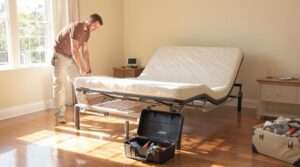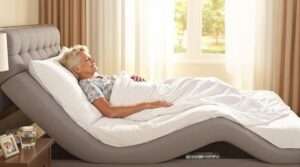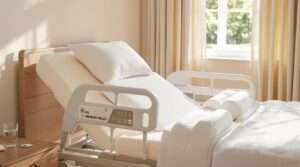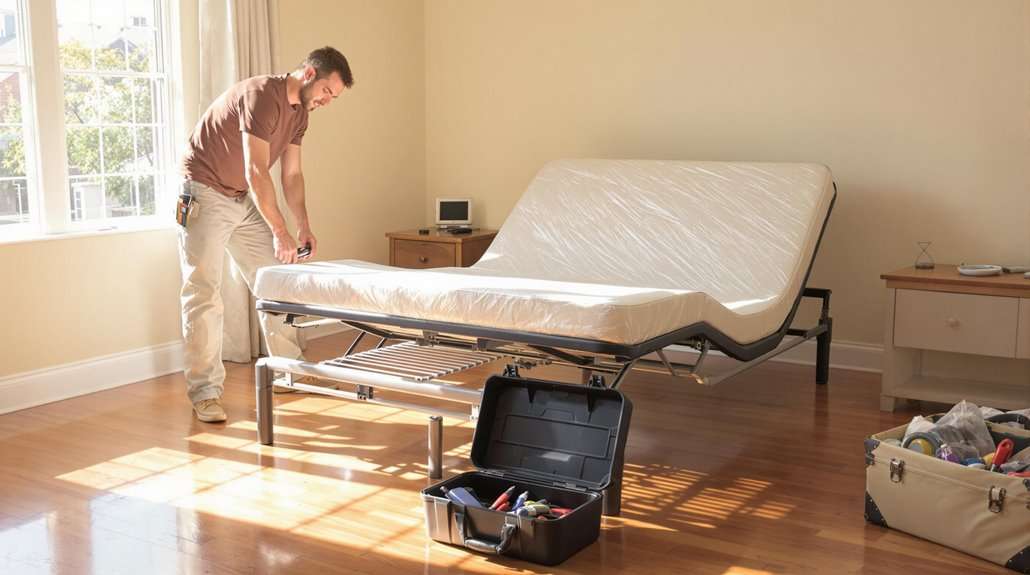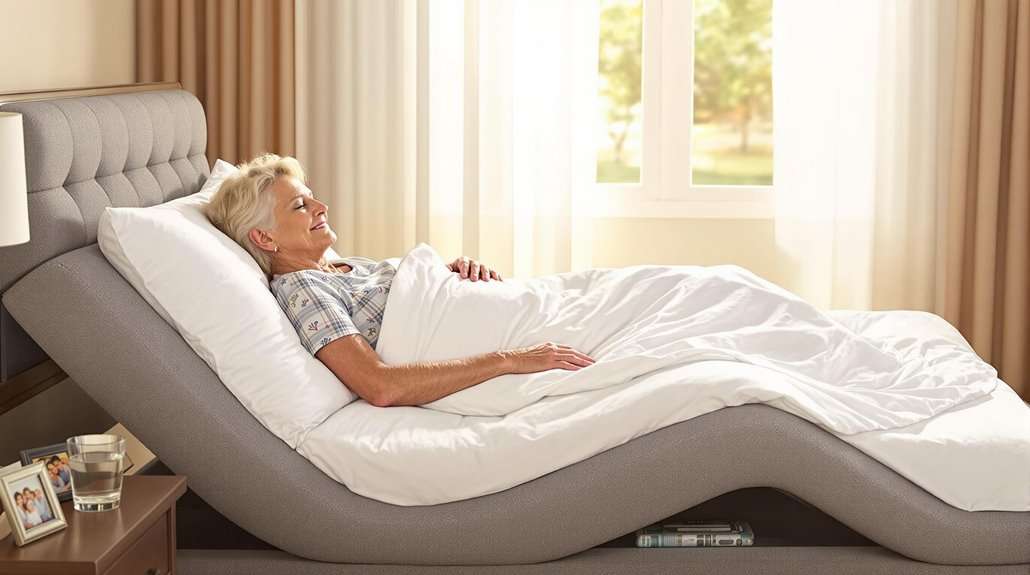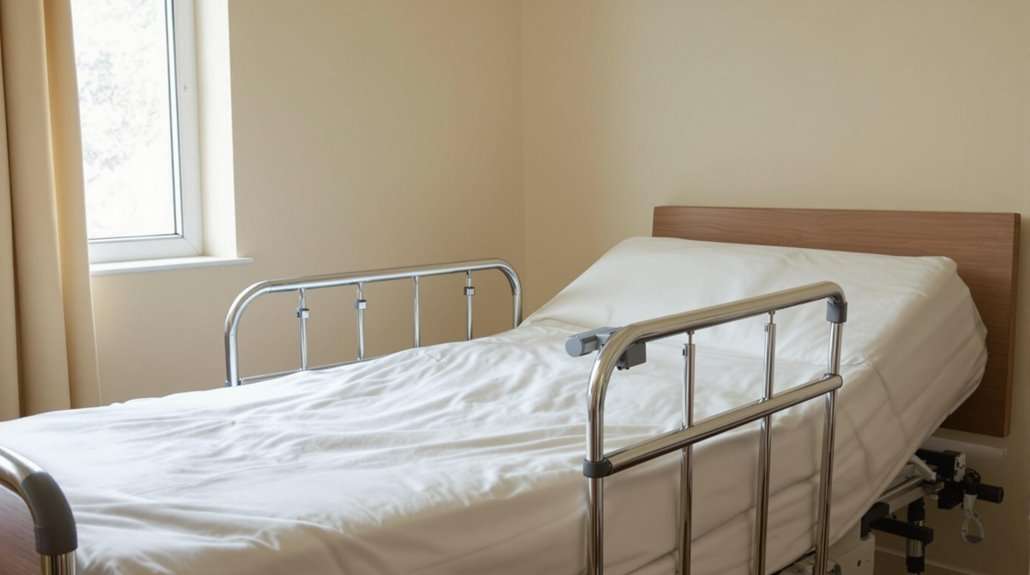Choosing the right bed is crucial for the well-being of elderly loved ones. Many people confuse senior beds with hospital beds, but they have different features. Hospital beds are designed with full adjustability and safety rails to support patients during recovery.
With over ten years of experience in assisted living facilities, I understand what families need. In this blog, you will learn the key differences between senior beds and hospital beds to help you make the best choice for your loved one.
📋✅
- Adjustability: Hospital beds can move their head and foot parts. Senior beds have simple adjustments for home use.
- Design: Hospital beds look clinical and fit in care facilities. Senior beds look like regular home beds and match home decor.
- Safety Features: Hospital beds have side rails and wheels to keep patients safe. Senior beds may have optional rails and height adjustments.
- Comfort: Senior beds offer things like massage and soft mattresses. Hospital beds have special positions to help with medical needs.
- Use Settings: Hospital beds are made for medical settings like clinics. Senior beds are best for long-term care at home.
Design and Structure Differences

Senior beds focus on comfort and fit into home settings. Hospital beds have adjustable parts that help caregivers meet medical needs.
Adjustability Features
Hospital beds offer full adjustability, allowing both the head and foot sections to move. A control panel on the headboard lets caregivers change positions easily. Features like the Trendelenburg position help with patient care and comfort.
These beds support various adjustable positions to prevent pressure sores and assist during post-surgery recovery.
Adjustable beds for home use have electric controls for simple adjustments. They may include luxury options like massage and wireless remotes. High and low settings benefit elderly people with Alzheimer’s and dementia.
Home hospital beds enhance safety and comfort, making long-term care easier for both patients and caregivers.
Adjustable beds provide the flexibility needed to meet each patient’s unique needs, says a healthcare professional.
Aesthetic Considerations
Moving from how beds adjust, let’s look at how they appear. Hospital beds have a clinical look. They fit well in care facilities like nursing homes and outpatient clinics. These beds often include space at the foot for patient charts, keeping important information close.
In contrast, adjustable beds resemble regular home beds. They come in various styles and colors to match your interior decor. Using materials like memory foam and air mattresses, these beds offer superior comfort.
This warm appearance makes them ideal for home hospital settings and hospice care, providing a cozy environment for the elderly.
Functional Differences
Hospital beds have built-in safety features like side rails and adjustable heights to protect patients. Senior beds offer more comfort options, such as customizable headrests and pressure-relief mattresses to help prevent bed sores.
Safety Features
Adjustable rails on hospital beds prevent falls and ensure patient safety. These beds have wheels for easy movement in healthcare settings. Senior beds offer safety rails as optional features, allowing customization for elderly care.
Some adjustable models include height adjustments, making it safer and easier for caregivers to assist patients.
Emergency power backups in adjustable beds keep safety features active during power outages. These beds help prevent bed sores and pressure ulcers by allowing position changes. Safety features like hand pendants enhance patient safety by providing quick access to help.
These options support effective nursing care and improve the overall safety of patients.
Customization Options for Comfort
Adjustable beds provide many comfort options. Caregivers use remote controls or smartphone apps to move the bed easily. These beds help people with chronic pain, arthritis, and other chronic illnesses.
Elevating the legs boosts circulation. Zero gravity positions improve sleep posture. Home hospital beds include specialized mattresses for patient comfort. Hospital beds offer accessories like overbed tables.
Custom features support better care in long term care facilities.
Choosing the right bed ensures comfort and safety for your loved ones. Senior beds offer adjustable heights and soft rails, making them ideal for home use. Hospital beds have more adjustability and safety features intended for medical settings.
Understanding these differences helps caregivers provide the best care. Select the bed that fits your family’s needs for a safe and restful environment.
Related Questions
1. What is the difference between a senior bed and a hospital bed?
Senior beds are designed for comfort and ease at home, while hospital beds offer more features for medical care, like adjustable heights and hand pendants for nurses.
2. Can hospital beds help with sleep apnea and other disorders?
Yes, hospital beds can be adjusted to help manage sleep apnea and other health disorders by changing the bed’s position for better breathing.
3. Does Medicare Part B cover hospital beds or senior beds?
Medicare Part B may cover hospital beds if they are needed for medical reasons, but usually does not cover senior beds used for comfort at home.
4. Are bariatric beds available for seniors and hospital patients?
Yes, bariatric beds are available for both seniors and hospital patients who need extra support and weight capacity.
5. How do hospital beds support mental health and cognitive impairments?
Hospital beds can be adjusted to make patients more comfortable, which helps with mental health and supports those with cognitive impairments by making care easier for nurses and therapists.



